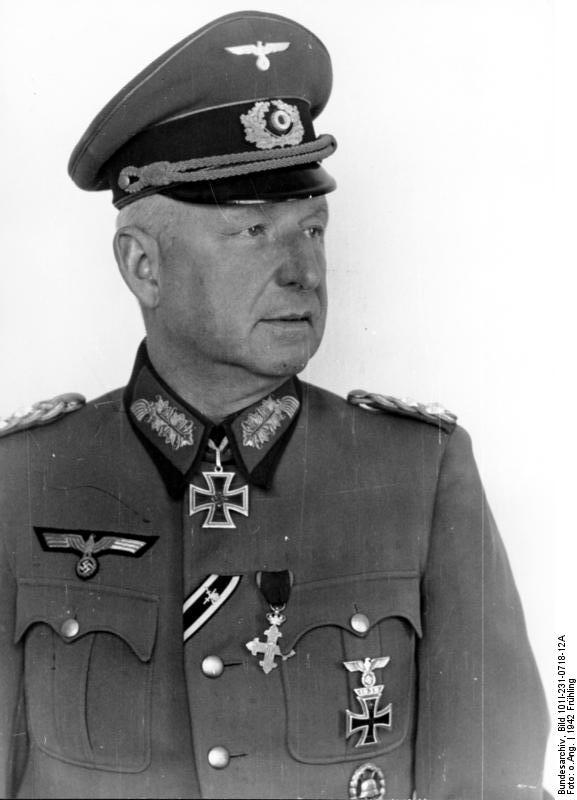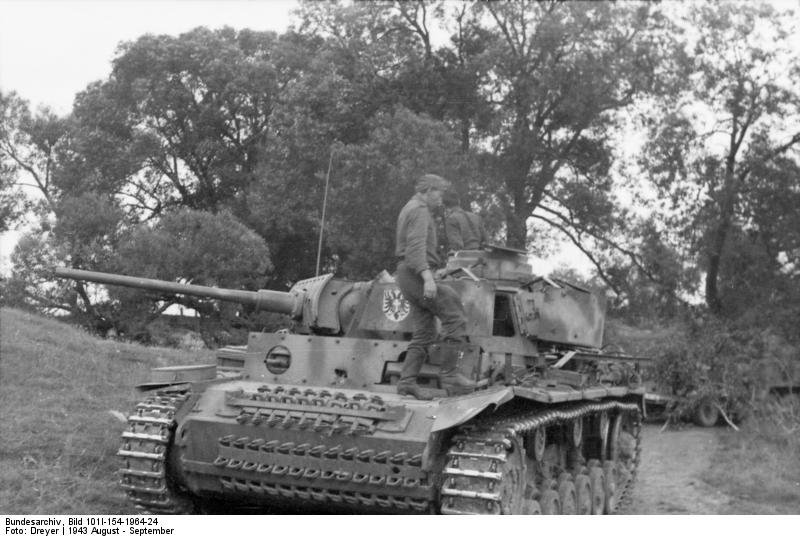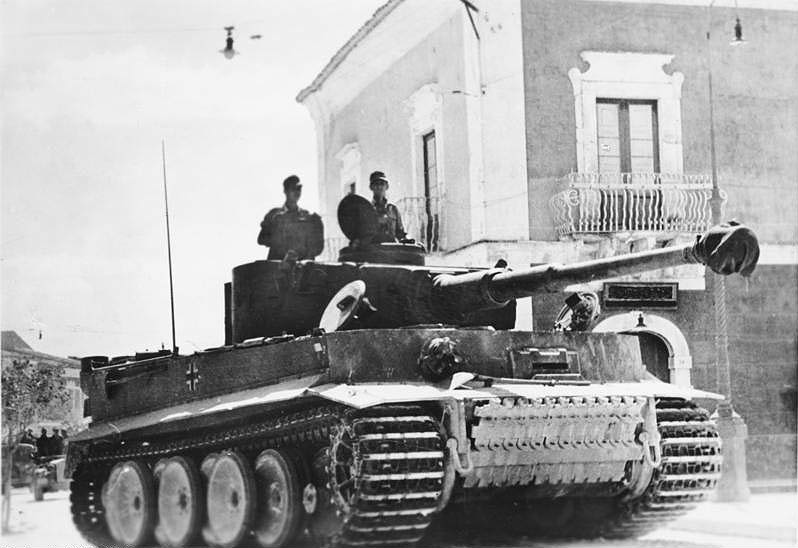Panzerkampf
In 1943 during World War II, one of the largest tank battles in history resulted in the Soviet Union gaining the advantage on the Eastern Front, which it would hold until the end of the war.
The Russian counter-offensives that had begun in November 1942 had pushed the Germans not only mostly out of the Caucasus, but also crossed into eastern Ukraine and southern Belarus. By March 1943 they had created a large salient deep into the German front lines between the cities of Orel and Kharkov. This was the Kursk salient and was an obvious target for German High Command.

By cutting off the salient, they would not only shorten the frontline, but also trap a large frequency of Russian soldiers and material. Such a success would give the Germans time to rebuild after the recent losses at Stalingrad.
Both the forces of Army Group South led by General-Field Marshal Erich von Manstein, and those of Army Group North under Generaloberst Walter Model, were to perform a massive pincer movement that would smash through on both sides of the salient and encircle the troops inside, but many German Generals expressed doubts.
Military tactics
The Russian army of 1943 was not the same army they so easily outmaneuvered in 1941. By 1943, the Soviets were much more competent in using their deep-battle doctrine, and they were already preparing a summer offensive to use the salient to their own advantage, since they also knew of the German plans. The British had cracked the German cyphers and given intel to the Soviets, so Stavka – Russian High Command – had convinced Stalin to delay the Soviet offensive until after the Germans had exhausted their own against the Russian defences. Then the Soviet counter-offensive would easily punch through the German lines and collapse the whole Army Group Centre.
Tens of thousands of Russian workers began building an enormous defence system, digging trenches and tank-traps on 5,000km of frontline. The defence was centered mostly on strongpoints manned by rifle-battalions. Each also had four 4.5cm anti-tank guns. Russian pioneers lay up to a million mines all around the salient, both anti-personnel and anti-tank mines, mostly in front of their forward line. Red Army General Konstantin Rokossovsky also had a strong mobile defence force that would engage the Germans if they managed to penetrate the front lines. All in all, the Soviet forces enjoyed at least a 2:1 advantage in men, tanks, artillery and aircraft.
Von Manstein disregarded those numbers, since he still believed in the inferior quality of the Soviet troops. Model was less optimistic and very much against the whole operation, but despite his doubts, Hitler and High Command urged him to concentrate all his forces and attack from the north. Model, however, prepared for a possible Russian counterattack and held the 2nd Panzer Army around the city of Orel in reserve. He also prepared the Hagen-Stellung – a defensive line the Germans could fall back on if everything went to hell.
The German offensive begins

On July 5, 1943, the German offensive began – well, it started with a Soviet artillery barrage that rained down on the German frontlines. The day before, captured German soldiers had revealed the exact hour the offensive would begin, so tactical surprise was lost.
Still, the German forces were soon moving towards the Russian lines under their own opening barrage of heavy artillery, mortars and Nebelwerfer-rockets. As usual, the advance was spearheaded by the German tank divisions and mobile Sturmdivisions, but the minefields and Soviet resistance slowed them down.
However, the Germans had sent new weapon systems into the battle. Ferdinand tank destroyers could outrange their Russian counterparts, and German pioneers led radio-controlled demolition tanks into the minefields to clear the path. Well-positioned Tiger tanks could destroy whole groups of Russian tanks that were sent out in premature counter attacks. In the air, the superior German FW-190As were able to suppress the Russian fighters and bomber attacks, despite their disadvantage in numbers.
So as the days dragged on, the German advance took out several major strongpoints, and they even penetrated the first line of Rokossovsky’s defences, but the large defensive system slowly but steadily whittled away the German forces. Tanks were damaged by the mines, and the relentless Russian artillery caused heavy casualties among the German infantries.
German tank losses weren’t actually as high as Russian sources may suggest. Only around 10% of Model’s tanks were lost. The others took light damage, mostly to their tracks, which could usually be repaired in the field. Nonetheless, the Soviets achieved what they hoped for; they blunted the German spear, all while the Russian tank armies were building up for their own killing blow.
On August 11, Model finally called off the fruitless offensive. Only the elite SS-Panzerdivisions Totenkopf, Das Reich and Leibstandarte in the south were still making progress, as they reached the fields near a small village called Prokhorovka. The Stavka wanted to attack now, before Model could redeploy his Panzers. The long awaited counterattack, Operation Kutuzov, would set loose the Russian tank armies.
Operation Kutuzov starts

Early in the morning of August 12, Operation Kutuzov began. In the south, SS-Panzer divisions were surprised by a wave of armour that was heading their way – some 500 tanks that attacked the unprepared Germans. The backbone of the Russian tank force was the upgraded T34/76 model, which made out around 70% of the tanks, but the rest was made out of light tanks. Only a few heavy KV-tanks were there. The Germans had far fewer tanks, not even 300, but those SS-divisions were the first to receive the Tiger and Panther models that outclassed the T-34 in range and whose armour could not be penetrated by the lighter tanks, and yet, in larger groups, the T-34 was still extremely dangerous.
The tanks clashed on the fields of Prokhorovka. The German tanks desperately fought off the Soviet tanks at point blank range. German Panzergrenadiers even resorted to ramming them with their halftracks. Despite heavy losses, though, the Soviets forced the Germans to retreat.
In the north, the counter offensive began with a massive artillery strike, obliterating much of the German forward positions of the 2nd Panzer army.
The Soviet counter-attack here would be even more deadly than in the south. Model’s foresight had paid off and the 2nd Panzer Army was able to fend off the first wave of Russian tanks, attacking towards Orel, but this was just the initial engagement. The overwhelming Russian artillery and armour soon broke into the German positions all over the front, and Model was forced to pull back just to prevent encirclement, without even waiting for authorisation from Hitler. However, the Soviets failed to exploit their advantage or realise how close the German defences were to collapsing, so the Germans managed a fighting retreat.
As the Red Army captured the major prize of Orel on August 5, the German army retreated into their Hagen position, and it was that that ultimately saved them. German High Command was now forced to face the fact that the German army was not able to fight high intensity battles on such a large scale any longer. The offensive had been a disaster, for not only did it not bring victory, it cost the German army the strategic initiative on the Eastern Front, and they would never regain it.
The offensive had cost the Russians dearly, yes, and losses were perhaps four times higher than those of the Germans, but the Russians could replace their losses and the Germans by this time could not. The Russians were on the offensive for good.
Our song, ‘Panzerkampf‘, which is featured on The Art Of War album, was written about The Battle of Kursk. Take a look at the lyrics we wrote here.
If you prefer a visual interpretation of this story, watch our Sabaton History episode: Panzerkampf – The Battle of Kursk.





















